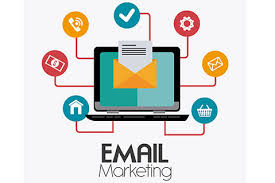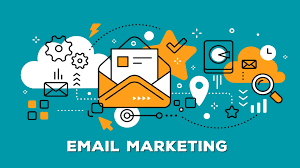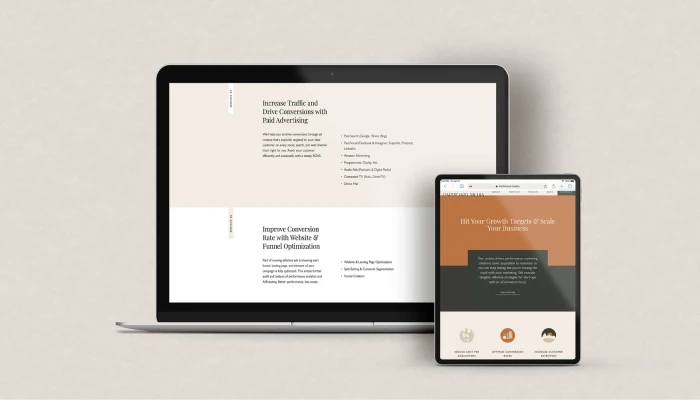Hello!
Though some brands may focus on other channels, email remains a powerful tool for ecommerce marketing.

If you are new to email automation, you may be wondering what types of emails you can automate to keep your audience engaged.
Below, we’ve put together a list of the most important automated email campaigns for your e-commerce store.
Ecommerce Email Marketing Automation Example #1 – The Welcome Email.
One of the first automated email campaigns that you should create for your e-commerce store is the welcome email. This email or series of emails is delivered to consumers’ inboxes after they make a purchase from your site or subscribe to your email list.
 The welcome email is often one of the first points of contact between your company and the new customer or prospect. That’s why it is vital that you take time to get the messaging just right so that you can make a successful first impression.
The welcome email is often one of the first points of contact between your company and the new customer or prospect. That’s why it is vital that you take time to get the messaging just right so that you can make a successful first impression.
Not only is the welcome email your chance to make the best first impression, but it may also be a determining factor in whether the consumer will continue to open future emails from your company. Though it may be tempting to try to sell in your welcome email, you should avoid doing this.
The purpose of the welcome email is to confirm the consumer’s transaction, whether that is making a purchase, signing up for an email list, or downloading a piece of content. Keep your message clear and simple by thanking the customer and reminding them of the value they will receive from their transaction.
You may even want to sweeten the deal by providing an exclusive promotional offer such as a discount or free shipping on their next purchase.
This welcome email is short and sweet, quickly getting to the point – thanking the individual for signing up for the email list. This email message also clearly indicates the value of being a subscriber (“be among the first to hear about new arrivals, big events, and special offers”) while also providing a special deal (15% off). The design of the ecommerce marketing email is also effective as it fits within Kate Spade’s branding.
The design also includes a convenient button that encourages conversion and even provides links to the company’s social media profiles and other important site pages, all of which can boost further engagement.
Ecommerce Email Marketing Automation Example #2 – The Post-Purchase Follow Up
 Following up with a customer after they make a purchase is an effective ecommerce marketing tactic that can help you build stronger relationships with your customers and encourage repeat sales.
Following up with a customer after they make a purchase is an effective ecommerce marketing tactic that can help you build stronger relationships with your customers and encourage repeat sales.
To save you time during this process, you can develop a post-purchase follow up email for your e-commerce store, which allows you to automatically reach out to consumers after they have made a purchase.
The post-purchase follow up email shows the customer that you care about their experience and want to engage them even after they have paid. It also helps remind them of any important information about their purchase such as shipment estimates, return policies, or tracking information.
Like the welcome email, this email should avoid sales language and instead aim to ensure that the customer gets the information they need about their order.
The email content provides important information about what happens after the customer has made a purchase. It also informs the customer of how they can make changes to their order and track their delivery with direct links to delivery information, package tracking, and the company’s return policy. The language is friendly and the content is informative without pushing any further sales.
 The post-purchase email is also a great opportunity to ask customers for feedback on their purchase. You can include a link to a customer survey or just ask customers to reach out with any questions or concerns.
The post-purchase email is also a great opportunity to ask customers for feedback on their purchase. You can include a link to a customer survey or just ask customers to reach out with any questions or concerns.
This automated email should give customers the information they need about their purchase but also make it as easy as possible to get assistance should they need it.
Ecommerce Email Marketing Automation Example #3 – The Abandoned Cart Reminder
It happens to everyone. You start browsing an e-commerce store site, fill your cart with items, and then click away from the site without finishing your purchase.
It could be because you are still making your mind up about the items or simply because you got distracted before checking out. The abandoned shopping cart is one of the biggest struggles for e-commerce brands.
When consumers put items in their cart, it’s clear that they are interested in the products. However, e-commerce brands need to find a way to re-engage these consumers and encourage them to finalize their purchase.
This is where the abandoned cart reminder email comes in. This type of email is another important piece of ecommerce marketing communication. This email message offers a gentle reminder to consumers about the products they have left behind.
 You can trigger these messages in your automated email workflow to be sent to consumers after they have left your site and abandoned your shopping cart.
You can trigger these messages in your automated email workflow to be sent to consumers after they have left your site and abandoned your shopping cart.
Using your email automation platform, you can arrange to have these emails sent at the most optimal times of the day to ensure higher open rates for maximum results.
This email message is simple yet effective. It thanks the consumer for visiting the site and then makes it as easy as possible for the individual to convert by providing links to the items that they have left in their shopping cart.
This email message is short and sweet, providing a gentle reminder that the consumer has left some items in their shopping cart. Note that it still makes it as easy as possible for the consumer to convert by providing a button that will take them to their shopping cart to complete the purchase process.
Ecommerce Email Marketing Automation Example #4 – The Tailored Upsell Offer
The upsell is an important ecommerce marketing tactic that can help your brand boost sales and encourage more repeat purchases over time. However, if you want to be successful with your upsell efforts, you need to make sure that the products you are showcasing are relevant to the consumer. This is where the tailored upsell offer email comes into play.
 Using your email automation platform, you can trigger emails to be sent to consumers after they make a purchase with informative content that helps maximize the relevance of the offer.
Using your email automation platform, you can trigger emails to be sent to consumers after they make a purchase with informative content that helps maximize the relevance of the offer.
The key to creating an effective upsell email is to provide specific and relevant suggestions for other items that a consumer might like based on their previous purchases.
The email message is clear and simple. The email thanks the consumer for their purchase while gently providing a suggestion for another item that the customer may be interested in. Again, this email makes it as easy as possible for the consumer to convert by providing a button that allows the customer to purchase immediately.
Note that the company also provides a button that leads the customer to similar items that they may be interested in, thus subtly encouraging further sales. The email design here is also effective as the text is short and sweet and the image of the product is the focal point of the email.
Ecommerce Email Marketing Automation Example #5 – The Re-engagement Email
There’s a good chance that your e-commerce store has email addresses for consumers who have not engaged with your company in a while. These individuals may have visited your site or made a purchase months ago, but have not returned recently.
 Though you may have already decided that these consumers have been lost, you still have an opportunity to re-engage them and get them interested in your site and products once again.
Though you may have already decided that these consumers have been lost, you still have an opportunity to re-engage them and get them interested in your site and products once again.
The re-engagement email allows you to automatically reach back out to customers who have not engaged with your brand after a certain amount of time. These emails typically provide a special promotion or offer that is just too good to pass up.
Whether you provide a significant discount, free product, or a chance to win items, you can start to re-engage these dormant audiences with a fun promotion that will catch their attention.
Again, the email message here is short and sweet, but certainly effective. The “we miss you!” headline is friendly and fun, getting the point across quickly. Pinkberry then offers the consumer a free yogurt and tells the individual how they can take advantage of this special offer.
 The design of the email is clean and simple, making the Pinkberry product the focal point of the email.
The design of the email is clean and simple, making the Pinkberry product the focal point of the email.
The ad has simple and direct ad copy that entices viewers to see Amazon’s deals. Not only does it tell viewers to “Check out today’s deals,” but it also has a “Shop Now” button that clearly tells users what they should do next and conveniently leads them to the next step in the purchasing process.
Final Takeaways
Automated emails help your e-commerce store save time while increasing conversions and building stronger relationships with consumers. By delivering targeted messages to leads and customers at just the right time, email automation can help you drive more conversions and experience better results over time.
To take advantage of the benefits that automated emails can provide, add the examples above to your ecommerce marketing strategy.
Thank you!
Join us on social media!
See you!






